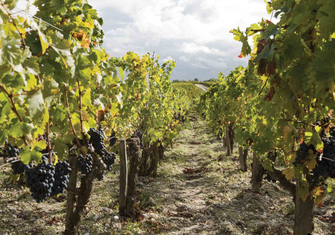Lloyds Bank has published research on the housing market and it’s not all plain sailing! House sales dropped 7% in England and Wales last year and are still down 30% on levels a decade ago.
Not surprisingly Greater London has seen the sharpest decline in the period 2015 to 2016 with 18% fall in sales, this has rippled out across the South East region where they report levels down 10%. In fact all regions in England and Wales went into negative territory in this period. The strongest performing regions in 2016 were the East and West Midlands but they were still reporting losses at -1%, followed by the North West (-2%).
Investors may also be surprised to learn that London was also the worst performer over the five year period, with only 2% growth in the period 2011 to 2016, whereas other regions saw significantly better performance (see the table Property % changes by region, 2006 – 2016), with the North West leading at 46%.

In the longer term (ten years 2006 – 2016) house sales in all regions were again in negative territory with greater London seeing a decline of -44%, and the North at -42% at the highest levels, East Midlands and Wales the least effected regions at an equal -28%.
The report comments on a ‘potential’ property market north / south divide with 80% of the towns reporting increases in home sales in 2016 located in the north, however this may well be because they offer significant value post the declines endured over the preceding ten year period.
Property % changes by region, 2006 – 2016
| Region | % change 2006 – 2016 | % change 2011 – 2016 | % change 2015 – 2016 |
|---|---|---|---|
| North | -42% | 24% | -8% |
| Yorkshire & Humber | -38% | 39% | -3% |
| North West | -36% | 46% | -2% |
| East Midlands | -28% | 43% | -1% |
| West Midlands | -30% | 43% | -1% |
| East Anglia | -30% | 23% | -5% |
| Wales | -28% | 37% | -3% |
| South West | -29% | 30% | -8% |
| South East | -33% | 23% | -10% |
| Greater London | -44% | 2% | -18% |
| ENGLAND & WALES AVERAGE | -34% | 29% | -7% |
Source: Lloyds Bank
Low interest rates and schemes such as ‘Help to Buy’ have engaged first-time buyers; this element of the market showing an increase in activity which represented 49% of house sales financed by mortgages, more than a third up on 2006 and the highest level for more than two decades. But even with this backdrop sales currently remain significantly below levels at the peak of the last housing boom. The lack-lustre sector performance is put down to a shortage of housing stock, the high costs of moving and insufficient equity or inability to provide large enough deposits.
There is no expectation that these trends are going to change any time soon and in fact property sales could fall further in the near future, particularly in London and the South East. Confidence issues and concerns over potential future interest rate rises are also leaving many property speculators sat on their hands.
We would of course want to draw parallels to the fine wine market and in the period reviewed by Lloyds Bank we are looking at data to the end of December 2016 and remember that this period included the three-year slump in the fine wine market between 2011 – 2014:
| Asset | 12 months to December 2016 | 5 years: 2011 – 2016 | 10 years: 2006 – 2016 |
|---|---|---|---|
| Property: England & Wales | -34% | 29% | -7% |
| Fine Wine: Liv-ex 100 | 24.8% | 3.8% | 151.38% |
| Fine Wine: Liv-ex 1000 | 22.3% | 18.3% | 160.76% |
| Gold | 29.5% | -7.6% | 109.56% |
Source: Property: Lloyds Bank, Wine and Gold: Liv-ex
In terms of more current data, fine wine continues to perform well and improve on the five-year performance measurement, as set out in Vin-X’s June Market Report:
| Asset | 12 months to 31st May 2017 | 5 years to May 2017 |
|---|---|---|
| Liv-ex 100 | 19.5% | 9.2% |
| Liv-ex 1000 | 21.4% | 23.8% |
| Gold | 17.8% | -2.8% |
Source: Liv-ex at 31st May 2017
The Knight Frank Luxury Investment report published last week compared the performance of luxury assets such as classic cars, vintage watches, jewellery and fine wine. Their measure saw fine wine top the league table at 24% growth over one year, 55% growth over 5 years and 256% growth over ten, only beaten by classic cars at 404% in the ten-year period. In comparison, property offers nothing like these returns to investors. Read the Knight Frank report in full.
Vin-X’s Treasure Asset report, published earlier this year, looked into the performance of luxury investments in more detail, comparing their performance with financial markets.
With the entry levels for investment-grade wine considerably lower than most other luxury investments, and certainly nothing like acquiring a property, investors can access this rewarding market much more easily and with no capital gains tax applicable on profits made. For more information contact us now on 0203 384 2262

